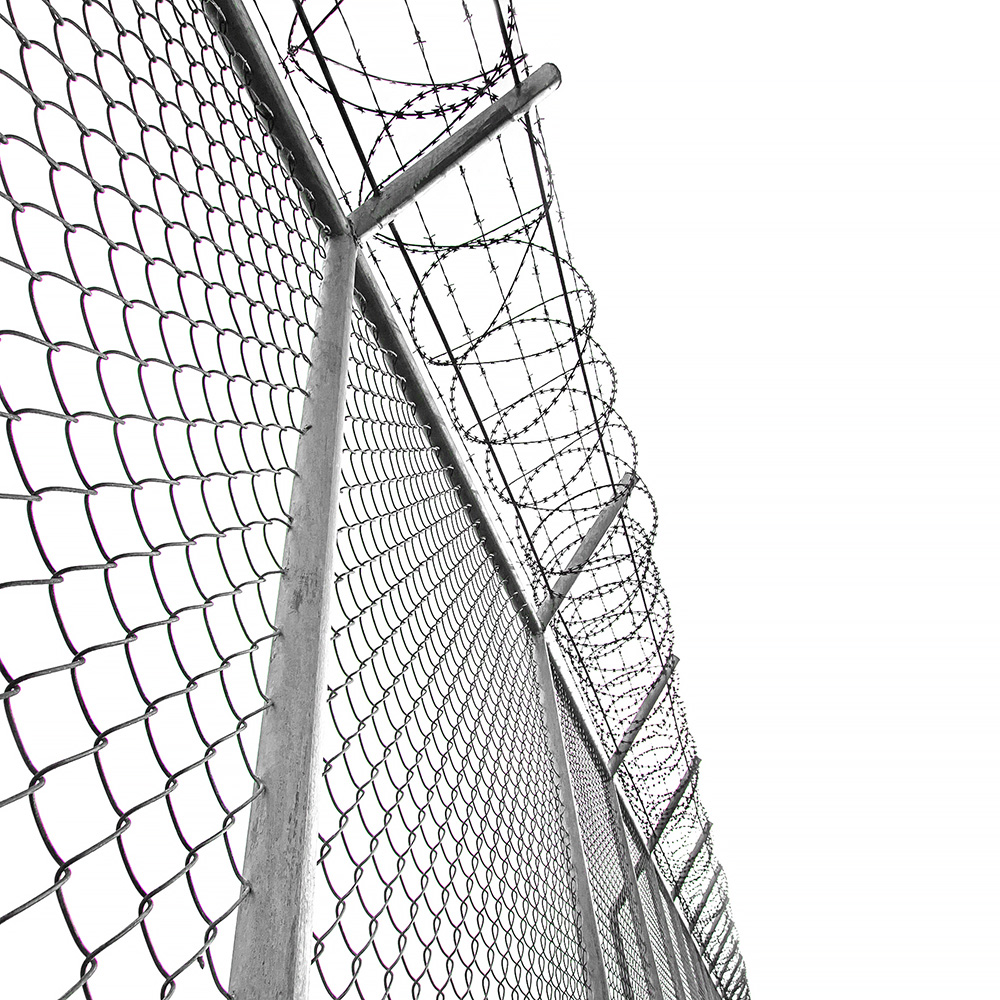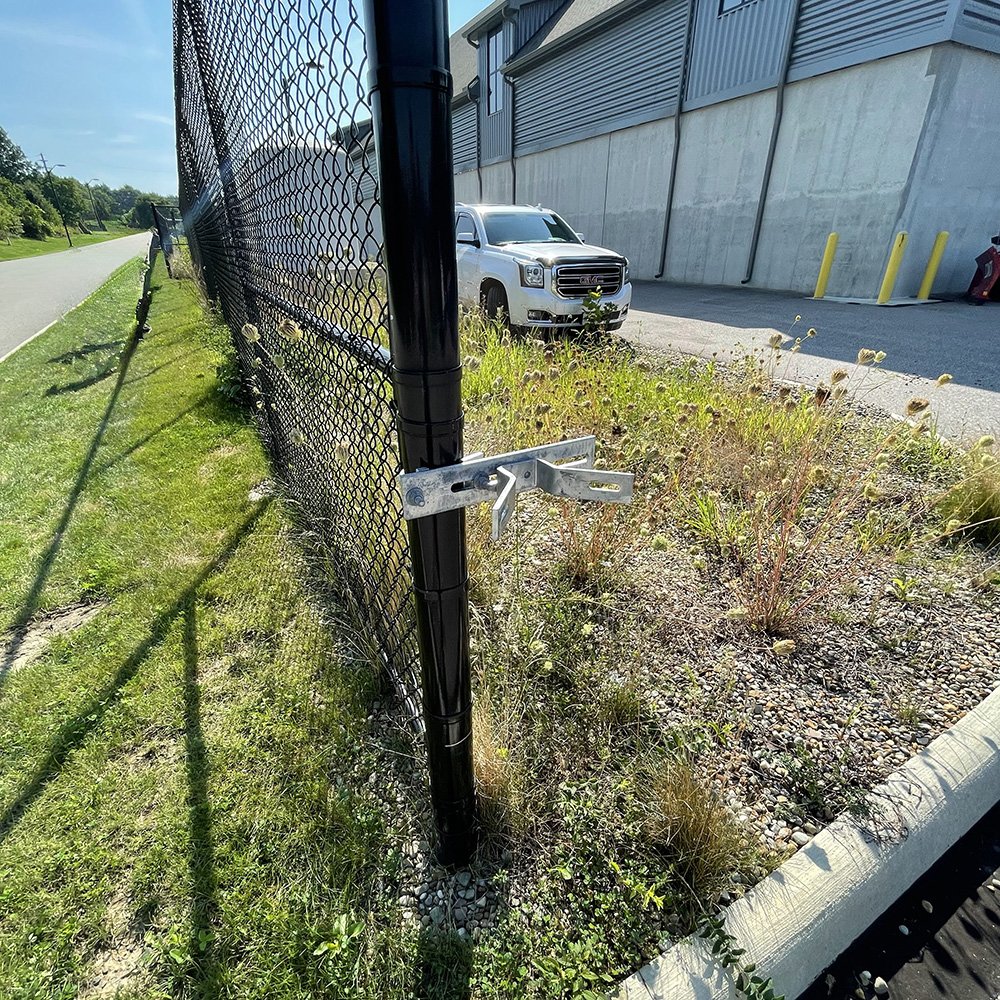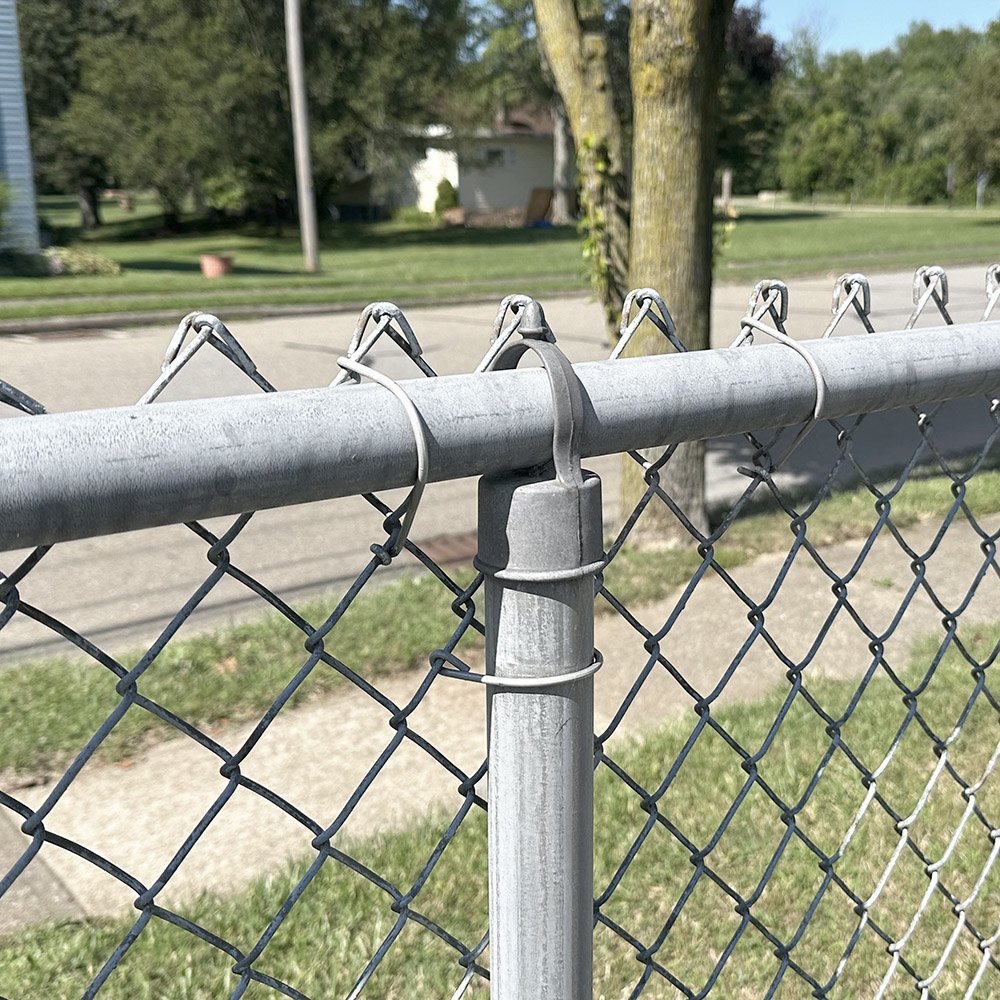Federal Specification RR-F-191 Technical Specification For Chain Link Fence
Federal Specification RR-F-191, also known as RR-F-191/3B, is a United States government specification that defines the requirements for the design, construction, and performance of wire rope used in various applications. This specification is primarily used in military and industrial settings to ensure the quality and safety of chain link fence wire used for lifting, rigging, and other load-bearing purposes.

Chain Link Fabric Classifications
Types:
There are four types of chain link fabrics, which must be woven into diamond shapes.
- Type I- Zinc-Coated Steel: the minimum coating weight on the wire shall be 1.2 ounces of zinc per square foot of coated surface area.
- Type II- Aluminum-Coated Steel: the minimum weight of aluminum coating for 6 and 9 gauge wire shall be .4 ounces per square foot. The minimum weight of aluminum coating for 11 gauge wire shall be .35 ounces per square foot.
- Type III- Aluminum Alloy: the aluminum wire weight shall conform to the requirements of ASTM B 211, alloy 6061 -T94.
- Type IV- (PVC) Polyvinyl Chloride Coated Over Zinc Or Aluminum-Coated Steel: the minimum thickness of PVC coating must be .007 inches. The manufacturer determines the coating application method. The minimum zinc coating weight on the steel wire shall be 0.4 ounces per square foot for 6 gauge and 0.3 ounces per square foot for 9 and 11 gauge.
Chain Link Mesh Size:
There are four mesh sizes, measured from the inside of the diamond shape, with a tolerance of ± 1/8-inch.
- 1-inch *for 9 and 11 wire gauge size only
- 1-3/4-inch *for all wire gauge sizes
- 2-inch *for all wire gauge sizes
- 2-1/8-inch *for all wire gauge sizes
Wire Gauge Size:
There are three gauge sizes, measured by the outside diameter of the wire, including the metallic coating. Except for Type IV wire, the uncoated wire diameter equals the gauge size. The tolerance for wire size is ± .005 inches.
- 11 Gauge = 0.120 inches
- 9 Gauge = 0.148 inches
- 6 Gauge = 0.192 inches
Fabric Height:
There are nine standard fabric heights, which must be measured within ± 1 inch. Chain Link Fittings offers custom fabric heights.
- 36 inches
- 42 inches
- 48 inches
- 60 inches
- 72 inches
- 84 inches
- 96 inches
- 120 inches
- 144 inches
Requirements
Diamond Count:
Determined by the manufacturer but must be consistent throughout the lot.
Steel Wire:
Unless otherwise specified, steel wire for chain link fabric must be of quality and purity such that when drawn to the wire gauge size specified, the wire must have the minimum tensile strength of 75,000 pounds/ square inch when tested. Steel and aluminum alloy breaking load per gauge:
- Steel 11 Gauge = 850 pounds
- Steel 9 Gauge = 1290 pounds
- Steel 6 Gauge = 2170 pounds
- Aluminum Alloy 9 Gauge = 925 pounds
- Aluminum Alloy 6 Gauge = 1560 pounds
Selvage:
There are three selvage types,
- Knuckled At Both Selvages. Fabric up to and including 60 inches high with 2-inch mesh.
- Knuckled At One Selvage And Twisted And Barbed At The Other. Fabric over 60 inches high with 2-inch mesh.
- Twisted And Barbed At Both Selvages. Fabric of all heights with 1-inch or 1-3/4-inch mesh
Knuckled selvage loops must be closed or nearly closed with a space less than the diameter of the wire. Twisted and barbed selvage must be twisted in a closed helix of 1 ½ machine turns, equivalent to three full twists, and cut at an angle to provide barbs. The wire ends beyond the twist must be at least 1/4-inch long.
PVC Coating:
The color of PVC coated wire must be one of three standard colors unless otherwise specified in the ordering data.
Quality Assurance
Responsibility for Inspection:
Responsibility for Inspection:
The contractor must perform all inspection requirements unless otherwise specified in the contract or purchase order. The contractor may use any suitable facility to perform the specified inspection requirements unless the Government disapproves. The Government reserves the right to perform any of the inspections outlined in the documents, should inspections be deemed necessary to ensure supplies and services conform to the requirements.
General Sampling:
A random sample of like fence components must be selected from each lot per MIL-STD-105, based on examination level II, and test level S-2. The AQL, Acceptable Quality Level must be within 2.5% defective for major defects and 4% defective for minor defects.
Minor defects include barbs on twisted or barded selvage not being sharp. Major defects include fabric height, diamond count, wire length, wire size, wire type, selvage, and color not being as specified. Additional major defects include frozen joints on zinc-coated fabric, coating is cut, scratched, or abraded exposing bare wire, or cracked, crazed, or peeling plastic coating.
Examination:
Weight, coating thickness, wire type, gauge, mesh size, length, and length of barbs each has specified examination methods with unique testing for PVC coated fabrics, which can be independently researched from the list below.
It's important to note that RR-F-191 is a government specification primarily used by federal agencies and organizaitions working with the U.S. government. Compliance with this specification ensures that the products meet certain quaility and safety standards. However, in non-government applications, industry standards and regulations may also apply, and manufacturers often provide detailed product specifications and guidelines for safe use.
We strongly suggest consulting our team of experienced professionals regarding the most up-to-date standards and regulations relevant to their specific application to install and use chain link fence products as safely as possible.
Non-Government Applicable Documents
- ASTM A 90: Test for Weight of Coating on Zinc-Coated Galvanized Iron or Steel Articles
- ASTM A 370: Mechanical Testing of Steel Products
- ASTM A 428: Tests for Weight of Coating on Aluminum-Coated Iron or Steel Articles
- ASTM B 211: Aluminum-Alloy Bars, Rods, and Wires
- ASTM D 1499: Operating Light-and-Water Exposure Apparatus Carbon-Arc Type for Exposure of Plastics
- ASTM D 1535: Specifying Color by the Munsell System
- ASTM D 1729: Visual Evaluation of Color Differences of Opaque Materials
- ASTM G 23: Operating Light and Water-Exposure Apparatus Carbon-Arc Type for Exposure of Nonmetallic Materials
- ASTM G 26: Operating Light and Water- Exposure Apparatus Xenon-Arc Type for Exposure of Nonmetallic Materials




